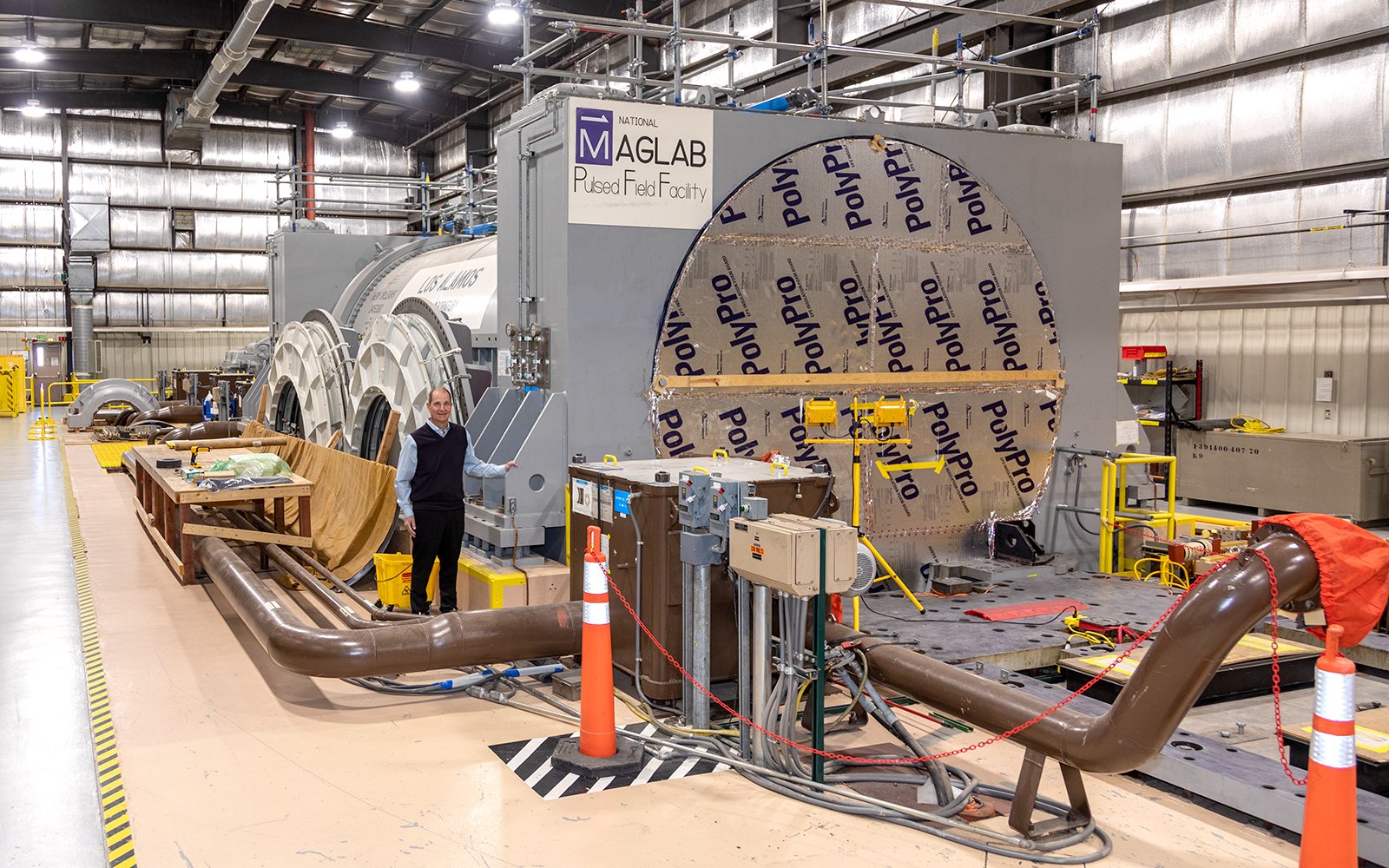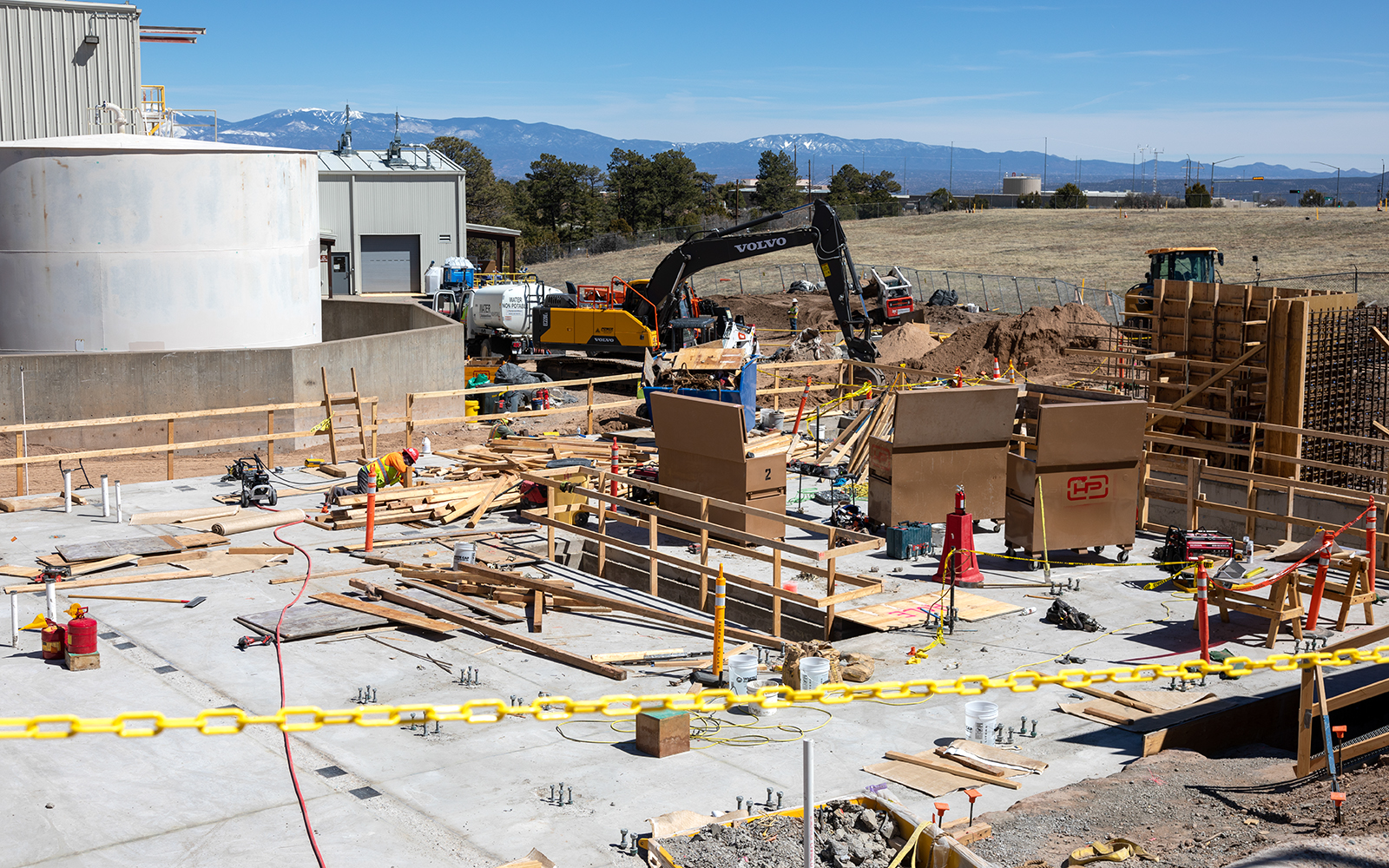|
Getting your Trinity Audio player ready...
|
For a construction executive, heading planning and operations for Los Alamos National Laboratory represents the pinnacle of the profession. A role at the 13,000-worker facility in the New Mexico high desert offers an opportunity to put a shining capstone on a career for the rare individual with the right qualifications and abilities.
Los Alamos Lab spans 40 square miles with thousands of buildings and structures that include science labs, some of which handle hazardous materials, weapons, and explosives. Because it is one of 16 research and development labs of the US Department of Energy, much of the lab’s work is classified and must be performed under stringent security protocols.
The difficulty of the job increases with the technical requirements of leading-edge scientific research facilities, challenging archaeological and environmental protocols, and the slow-moving government capital development process. The lab originated in the 1940s as the nexus for the development of the atomic bomb, and its scope of work has broadened to include advanced computing, climate research, and bioscience.
Martin Owens, senior director of the capital project execution organization at Los Alamos, brought his extensive background as a manager of nuclear energy projects to the lab in August 2021. Owens currently presides over 600 projects with a total value of more than $1 billion. Some of these are largely unknown outside of government and research institutions, and shepherding such projects comes with uncommon challenges even in the best of times.

Today, thorny issues facing the construction industry at large compound the challenge. Los Alamos, located about two hours from Albuquerque, is off the beaten path for contractors and tradespeople. Owens and his team have been greatly challenged in recent years to entice construction professionals to bid on projects. Demand for construction labor in Albuquerque has been robust, and contractors have their pick of lucrative work without the unusual demands of working for a government research lab.
The traditional design-bid-build delivery format no longer serves the lab’s needs in many cases, and Owens’s organization has turned to new project delivery strategies. One of those strategies is Construction Manager at Risk, a format that reduces financial risk on contractors while engaging the constructor earlier in design so that designers can leverage their expertise and incorporate their knowledge of current market conditions prior to final pricing.
Inflation has created headaches, making it more important than ever to regularly engage with contractors to understand the regional market and the pressures they are facing. “We had estimates done pre-COVID on some projects and then experienced sticker shock later,” Owens says. “We’re meeting regularly with our contractors to find out where they are at. They are experiencing supply chain volatility and pronounced craft shortages and are not able to lock in prices for very long.”
Another recent strategy is bundling a series of five office buildings together under one RFP to make the work more financially appealing to contractors. “It will be winner-take-all bidding,” Owens says. “A bigger pot of money and the pipeline of subsequent projects makes it more enticing.”
“Martin is keenly aware of the current challenges contractors face in the industry, especially the unique challenges building at Los Alamos National Laboratory,” says Steve M. Grauer, regional vice president for the Southwest region at Hensel Phelps. “It’s clear Martin is hyperfocused on clearing barriers that will heighten future success for all stakeholders at the lab.”

Owens has also turned to modular construction to deliver buildings faster while using labor more efficiently. Collaborating with Ramtech Building Systems, Los Alamos earned an award at a recent World of Modular Conference for a 10,000 square-foot office with noise-proofed space dedicated to high-security collaborative work.
With most of the labor to construct the shell of the building performed in a factory, Los Alamos did not have to lure as many contractors to work on-site and saved considerable time, Owens says. He believes the modular approach can be even more efficient by having additional scope and the associated inspections conducted at the factory rather than on-site.
To make contracting with the lab more like working with the private sector, Owens’s team is striving to streamline project development processes. For example, Los Alamos has revised and implemented new engineering standards coined ProtoSTAR to be more aligned with commercial practices.
The lab’s team also developed an integrated project review software planning tool that helps the project team identify potential areas of concern as the project progresses. It can prompt managers to get an archaeologist or environmental specialist involved early to address possible complications.
This includes the disturbance of the endangered Mexican Spotted Owl during its mating season. “If they are mating and nesting, you can’t make noise there for three to four months,” Owens says.
The Los Alamos area also harbors points of indigenous archaeological interest, so any digging can potentially uncover ancient artifacts. The lab strives to give the native culture its due respect, Owens says, and will halt work to allow archaeologists time to do their work.
“It will be winner-take-all bidding. A bigger pot of money and the pipeline of subsequent projects makes it more enticing.”
Martin Owens
Sustainability and environmental stewardship are also keen areas of focus for Owens and the associated operations lab staff of 6,000 engineers, lab infrastructure and maintenance specialists, and tradespeople. A project to upgrade the complex’s electrical infrastructure now underway will enable new buildings to be ready for full electrification.
The lab’s long-range goal is to reduce its use of natural gas and electrify most of the campus. The current power supply is not up to the task. An environmental assessment underway will analyze potential environmental impacts that could result from a new 12.5-mile, 115-kilovolt power transmission line. The lab hosts many power-hungry pieces of equipment, such as new supercomputing facilities, so an electric supply upgrade is vital to its mission.
Other recent sustainability projects of note include the reuse of wastewater for cooling towers and the repurposing of spoils from projects as construction fill. “We have a huge mound of soil from many years of construction activity,” Owens says. “We grade the soil and qualify it for engineered fill so we don’t have to go off-site to get it.” That reduces truck traffic and resulting CO2 emissions.
That clever reuse of waste material offers a fitting metaphor for Owens’s challenges and responsibilities. He would probably tell you that moving small mountains is a requirement when helming capital projects at a place with the size and complexity of Los Alamos. With the breathtaking pace of advancements in science, there will be plenty of mounds to move in the years ahead.


